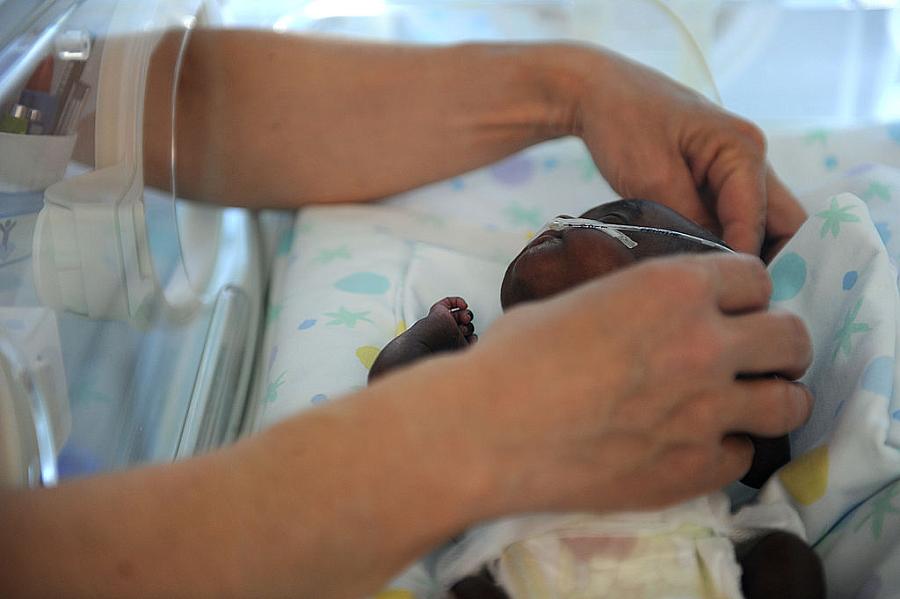Researcher: NICU study 'shines a light' on care disparities

Photo Credit: Gabriel Bouys / Getty Images
A recently-published Stanford University study found that infants’ race influenced the quality of their hospital care in California, adding to a growing body of research on the link between race and health care.
But even though the study found significant racial variations in care, a lead researcher was clear that the study was not about uncovering racial bias.
“I really don’t think that NICU workers intentionally provide disparate care to babies—many work especially hard to accommodate vulnerable populations,” said the study’s senior author, Dr. Jochen Profit, an associate professor of pediatrics.
Still, he said he’s hopeful the study’s findings will encourage NICU providers to examine how disparities may play out in their own units – and how they can be reduced.
Nuanced Findings
The Stanford University School of Medicine study, which looked at more than 18,000 NICU babies at 134 California hospitals, found that, in general, the hospitals with the best outcomes for their patients also delivered better care to white infants. Black and Hispanic infants were more likely than white infants to receive care in “poor quality” neonatal intensive care units or NICUs.
The disparities were not uniform, throughout California’s hospitals, though. At some California hospitals, for example, infants from vulnerable populations received worse care than white infants, while, at others, they received better care than whites.
Across California, the white babies also scored the highest when measuring if standard medical practices were implemented such as receiving steroids before birth to mature their lungs (89 percent for whites, 88 for Asian Americans, 87 for Hispanics and 85 for blacks). On certain outcomes, black infants scored higher than whites such as having lower rates of collapsed lungs.
Is provider bias involved?
I caught up with Profit to further explore the nuanced findings and what they mean for care in California. He explained that the data was not adjusted for social determinants of health, or the conditions in which people are born, grow, live, work and age. In other words, the results could change once you adjust for things like poverty.
Indeed, as Marketplace reported, race and socio-economic status may have played a role in these findings, according to University of Pennsylvania’s Dr. Scott Lorch, who was not involved in the Stanford study, but does similar research.
Still, the Stanford team did find some differences in care within the same hospitals—though no simple trend emerged. For example, in some hospitals, blacks or Hispanic infants received higher quality scores than white infants.
I asked Profit what might explain differences in care in the same hospitals. Did nurses or other providers exhibit some kind of bias?
Even though he did not think NICU providers intentionally provided different care, even fully engaged providers can face challenges, he said. There could be differences in how well parents are integrated into the care team. Language, for example, can be a significant barrier, he said.
Even when translation services are used, the flow of information is different when you don’t speak the same language. There could also be cultural expectations regarding the relationships between provider and patient interactions that could create communication barriers.
Regardless of the reason, when parents aren’t well integrated with the team, they could miss out on chances to discuss and give feedback on the infants’ behavior, overall wellbeing or breastfeeding.
Race/ethnicity is only one aspect of disparity, he also pointed out. Others include income, social status, sexual orientation of parents or maternal age.
Next Steps
While the current study didn’t delve into those potential influences, future research may explore the reasons why there is variation within hospital settings. In the meantime, researchers are hopeful that just knowing that these disparities exist could lead to discussions among caregivers and, eventually, action (This week, the Washington Post reported on a program in Baltimore that is using trained doulas to address the disparity in infant mortality between blacks and white babies.)
For now, Stanford researchers said they’d like “to encourage NICU caregivers to think about how these disparities play out in their own units and how they can be reduced,” according to their news release.
“Mostly, we are shining a light on the fact that differences exist,” Profit said.
[Photo Credit: GABRIEL BOUYS / Getty Images]

